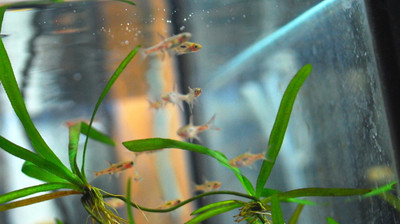Chili Rasboras: The Perfect Addition to Your Planted Nano Tank
Posted by Pet Zone SD on on 25th Mar 2023
Chili Rasboras: The Perfect Addition to Your Planted Nano Tank
Introduction:
Welcome to the world of Chili Rasboras! This vibrant, fiery little fish is the perfect addition to any planted nano tank, and it's no wonder they're so popular among aquatic enthusiasts. In this blog post, we'll dive deep into everything you need to know about Chili Rasboras, from their natural habitat and unique features to proper care and tank compatibility. Let's get started!
Section 1: The Alluring Chili Rasbora
The Chili Rasbora, scientifically known as Boraras brigittae, is a small, freshwater fish native to the blackwater streams of Borneo. Known for their stunning red-orange hue and slender, elongated body, these little swimmers are a fantastic choice for planted nano tanks. They bring a pop of color and liveliness to any aquarium and make great tank mates for other peaceful, small species.
Section 2: Ideal Tank Conditions for Chili Rasboras
To create the perfect environment for your Chili Rasboras, consider these essential factors:
- Tank size: A minimum 5-gallon tank is recommended for a small group of Chili Rasboras, but larger tanks are always better to accommodate their active swimming habits.
- Water parameters: These fish thrive in slightly acidic to neutral water, with a pH range of 5.0 to 7.0 and a temperature range of 72-79°F.
- Filtration: A gentle, low-flow filtration system is best for replicating their natural blackwater environment.
- Substrate and decorations: Soft, dark-colored substrate and plenty of live plants, driftwood, and hiding spots will help your Chili Rasboras feel secure and comfortable in their new home.
Section 3: Chili Rasbora Tank Mates and Compatibility
Chili Rasboras are peaceful, community fish that do well with other small, non-aggressive species. Some suitable tank mates include:
- Small Tetras
- Dwarf Rasboras
- Corydoras Catfish
- Otocinclus Catfish
- Shrimps and Snails
Avoid housing Chili Rasboras with larger or aggressive fish, as they may become stressed or preyed upon.
Section 4: Diet and Feeding
Chili Rasboras are omnivorous, with a diet consisting of small insects, crustaceans, and plant matter. In captivity, provide a balanced diet of high-quality micro pellets, flakes, and frozen or live foods such as daphnia, brine shrimp, and bloodworms.
Section 5: Breeding Chili Rasboras
Breeding Chili Rasboras can be a rewarding experience for hobbyists. Provide a separate breeding tank with soft, acidic water and plenty of plants or spawning mops for egg-laying. Once eggs are laid and fertilized, remove the adult fish to prevent them from eating the eggs.
Conclusion:
Chili Rasboras are a stunning and lively addition to any planted nano tank. With proper care, ideal tank conditions, and compatible tank mates, you'll enjoy their fiery presence for years to come. Visit www.petzonesd.com to learn more about Chili Rasboras and other aquatic species to create the perfect underwater oasis in your home.

